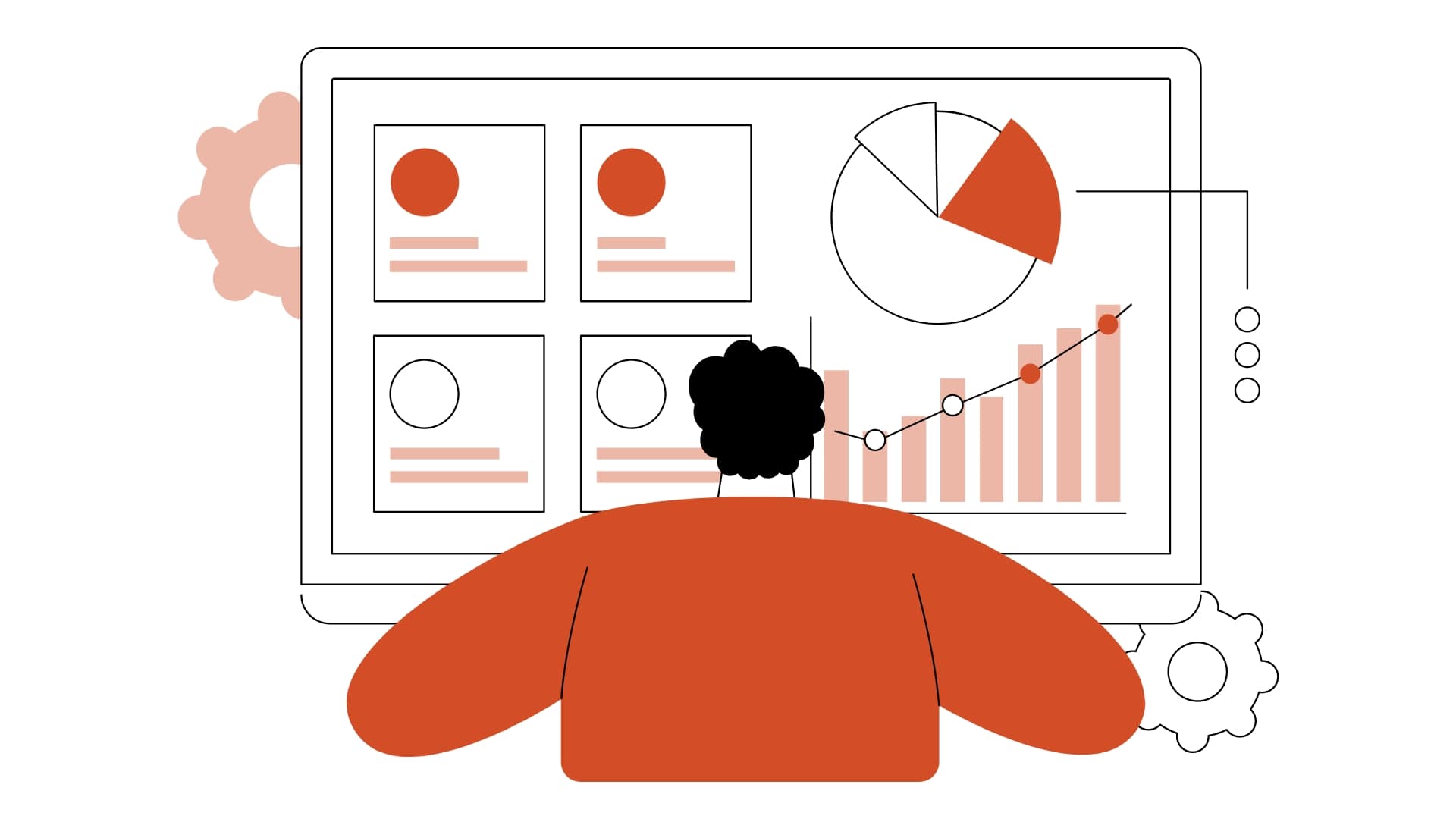- What is channel training?
- How a market-driven strategy can help channel training
- Why is channel training important in sales?
- Why you should focus your channel training on the buyer
- Who is responsible for channel training?
- How to provide channel training for your sales team
- How to use competitive information in channel training
- Tips for channel training
- Learn more about channel training
Channel Training 101: Teach the Sales Team How to Sell Your Product
You want a sales team that, at its core, understands the market and the problems they face so they can share your product as the perfect solution. It’s crucial for your organization’s growth and profitability. Channel training ensures that your salespeople understand the market so they can craft their messages to each buyer and maximize success.
Sales training isn’t a new concept, but channel training done right gives your sales team precisely the information they need to connect with your buyers in ways that make an impact. Strong channel training boosts sales, revenue, growth and profitability.
With a strong understanding of the value of channel training and how to provide it, you’ll see how it’s an integral part of any business, and be empowered to implement a solid channel training program.
What is channel training?
Channel training is the process for designing and delivering training programs that help your sales channels focus on the best strategies for selling your product by building their expertise of the buyers in the market and the problems they face. Often, your sales team can become too focused on your product and its capabilities. Keeping the focus on the buyer and their problems can help increase sales and boost revenues.
With channel training, your salespeople will build the knowledge and skills they need, so they’re prepared for conversations that occur throughout the buyer’s journey. Channel training is a key component of sales readiness and a crucial part of your sales-enablement strategy.

Lorem ipsum dolor sit amet, consectetur adipiscing elit. Maecenas dictum mi quis lacus tempor luctus.
How a market-driven strategy can help channel training
Being market-driven means every thought, word and action within your company is based on the market’s needs. This is especially true in channel training. Market-driven companies are more profitable, are faster in getting new products to market and have higher customer satisfaction levels.
Your company’s market-driven strategy can help target your channel training. When you focus development on a specific problem and target specific personas, you can share that info with your sales force. They can then effectively plan their communication using this information.
Market-driven companies also focus on teaching salespeople to understand the market, not making them experts on the product. Their training programs center on the tools, processes and information about the buyers and how they buy. They eliminate information that’s not focused on the market or the personas’ problems.
Positioning is a vital part of market-driven strategies. With strong positioning, you understand what problems your product solves for your buyers and what benefits they achieve with it. Part of channel training includes sharing your positioning statements—including the product’s target market, key benefits, competitive advantages and expected customer and buyeroutcomes—with your sales force. If you have multiple personas, you’ll want a customized positioning statement for each of them.

Lorem ipsum dolor sit amet, consectetur adipiscing elit. Maecenas dictum mi quis lacus tempor luctus.
Why is channel training important in sales?
Channel training is crucial to your company’s success. Your sales team interacts directly with buyers, and giving them the right tools can help maximize their odds of increasing sales.
With channel training, your sales force is prepared to face potential buyers. They can be more productive and can convert more prospects into long-term customers. They’ll thoroughly understand the problems your buyers face, and they’ll have the skills they need to solve the buyers’ problems with your product.
Why you should focus your channel training on the buyer
Keep in mind that today’s buyers can be, and usually are, experts. It’s easy for them to research your company, your product and your competitors. Your sales team needs to engage with them and provide value in authentic, genuine ways. So, it’s crucial for product marketing and sales teams to collaborate before and throughout the sales process.
Get to know your buyers firsthand, create buyer personas and map your customer’s journey. These personas give your sales team a cheat sheet for understanding who your buyers are and what problems they need to solve. With a good knowledge of a persona and a journey, a salesperson can anticipate problems buyers may not even be aware of yet.
Learn more about cultivating tools your sales team can use.
Who is responsible for channel training?
The entire product team—both product marketing and product management—is responsible for channel training, as product has the most market knowledge.
It’s crucial for product managers and product marketers to share everything with their sales reps, especially information about buyers and buyer journeys. It’s important to also share your product’s weaknesses in solving market problems. It can be tempting to focus on the strengths, but buyers will know where your competitors’ products are stronger. Sales reps will feel blindsided if buyers bring up a shortcoming in your product that you didn’t tell them about.
Take a closer look at the relationship between product managers and sales.
How to provide channel training for your sales team
Your sales team needs your support. They need to understand your market and the problems they’re facing, along with your marketing efforts. Start by focusing your channel training in the following four areas.
Onboarding
You want your new sales reps ramped up quickly, and your existing sales team to stay knowledgeable. Often, companies use an everything-at-once onboarding strategy, where sales reps have several days of orientation loaded with information.
However, many companies are finding an agile approach works better for both onboarding and ongoing training. Using the principles of agile software development, channel training programs can help salespeople develop specific skills at certain times to build their proficiency.
Continuous sales readiness
Your reps need to be prepared to maximize every interaction they have with buyers. So, you’ll want to have small, regular training sessions to keep them up to date on the latest market updates and changes, including changes to buying habits and market problems. In these training sessions, include information on how your product has been updated to meet these changes. Remember—market knowledge is always more important than product knowledge. Even for your sales team.
Transformative change
Your business might face a merger or acquisition, enter a new market or face new types of buyers. In these situations, your reps need to have very different conversations from what they’re used to. They need channel training to help them become confident and competent in their new roles.
Readiness to react
When news about your company hits the headlines or social media feeds, your buyers are going to contact the people they know—your sales reps. Whether it’s a product recall, a hostile takeover or a merger between competitors, your sales force needs to be prepared to answer questions and provide reassurance right away.
How to use competitive information in channel training
A key part of channel training is sharing competitive information with the sales force. Your team should be collecting information about your competitors’ products at trade shows, via demos, from their websites and ads, and by following product and industry news and social feeds. Your sales reps, vendors and suppliers also have information about your competitors.
You can compile this information in a document. You may want to compare products feature by feature, but don’t. Instead, position the factors that differentiate your product or address your competitors’ claims about your product head-on. Whatever format you choose, you’ll need to update this document regularly since your product, your competitors’ products and the market are constantly changing.
To measure success in sharing competitive information, ask your sales reps what they think and track how often reps use these documents.
Ask these questions about your buyers
Solid channel training is centered around how your product solves needs for your buyers. Answering these five questions can help you define why your buyers need your product and how it will help them achieve their goals:
- Who is your target market?
- What do prospects dislike about solutions in this space?
- How does my product or service advance the buyers’ objectives?
- How do buyers determine they need to change what they’re doing?
- How do buyers organize their priorities for investing in and implementing new solutions?
Check out this case study where one company answered these questions.
Tips for channel training
When you’re building your channel training program, keep these tips in mind:
- Keep your training simple and relevant. Salespeople won’t respond to your channel training efforts unless they feel your information will help them increase their sales. Make sure you emphasize the benefits to them. And once you’ve made your point, stop talking. Too much information will water down your message.
- Remember that buyers buy solutions, not features. In channel training, remind your sales force to step back from what the product does and focus on the problems it solves.
- Delivering strong demos can be key to sales, depending on your specific product, so teaching your sales force how to demo is a critical part of channel training.
- Understand that your buyers may be motivated by issues that aren’t on your radar. For example, a buyer may need to impress their boss in ways you wouldn’t necessarily recognize. This is where win/loss reports come in. Win/loss is the best source for understanding buyers needs and identifying ways you can support the sales channel.
- Channel training goes both ways. Your salespeople return from calls with valuable, firsthand experiences with prospects. Make sure you have a system in place to collect their feedback and impressions. That way, you can use this information to inform future channel training sessions.
- Make sure you update sales materials regularly and that your salespeople get notified whenever materials are updated.
- Channel training isn’t a one-and-done training session. It’s an ongoing process that keeps your sales team leading your company’s growth.
Learn more about channel training
Channel training empowers your sales team to deliver a personalized, compelling message to every potential buyer. With the right information, your sales force can connect with buyers, offer solutions to their problems and close sales more quickly. Expand your knowledge of channel training and more—register for Pragmatic Institute’s Launch course today.



